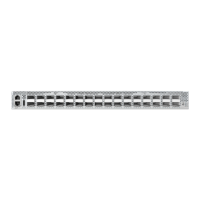C
HAPTER
25
| SNMP Commands
– 637 –
therefore need to configure the remote agent’s SNMP engine ID before
you can send proxy requests or informs to it.
◆ Trailing zeroes need not be entered to uniquely specify a engine ID. In
other words, the value “0123456789” is equivalent to “0123456789”
followed by 16 zeroes for a local engine ID.
◆ A local engine ID is automatically generated that is unique to the
switch. This is referred to as the default engine ID. If the local engine
ID is deleted or changed, all SNMP users will be cleared. You will need
to reconfigure all existing users (page 639).
EXAMPLE
Console(config)#snmp-server engine-id local 1234567890
Console(config)#snmp-server engineID remote 9876543210 192.168.1.19
Console(config)#
RELATED COMMANDS
snmp-server host (634)
snmp-server group This command adds an SNMP group, mapping SNMP users to SNMP views.
Use the no form to remove an SNMP group.
SYNTAX
snmp-server group groupname
{v1 | v2c | v3 {auth | noauth | priv}}
[read readview] [write writeview] [notify notifyview]
no snmp-server group groupname
groupname - Name of an SNMP group. (Range: 1-32 characters)
v1 | v2c | v3 - Use SNMP version 1, 2c or 3.
auth | noauth | priv - This group uses SNMPv3 with
authentication, no authentication, or with authentication and
privacy. See "Simple Network Management Protocol" on page 354
for further information about these authentication and encryption
options.
readview - Defines the view for read access. (1-32 characters)
writeview - Defines the view for write access. (1-32 characters)
notifyview - Defines the view for notifications. (1-32 characters)

